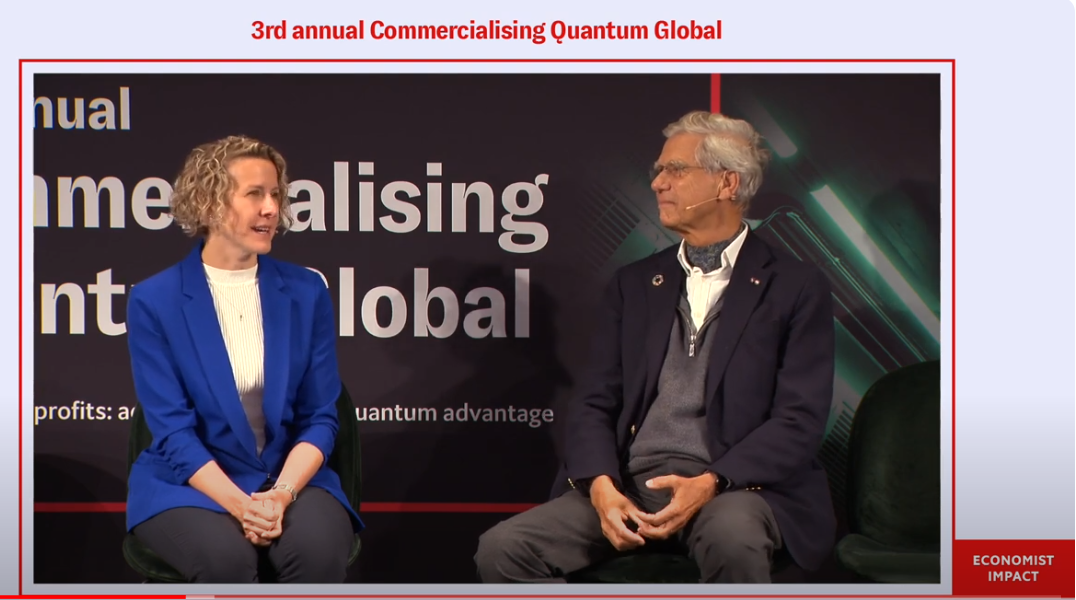The Race to Build a Quantum Internet: Photonic’s Stephanie Simmons Gives Her Two Cents

The Quantum Insider has been closely following Stephanie Simmons and her company Photonic since its founding. Simmons, a physicist and former researcher at Harvard University, co-founded Photonic with the vision of building distributed quantum computers connected via quantum internet. Photonic is pioneering an approach using silicon spin qubits interfaced with photonic links.
As the world inches closer to realizing the revolutionary potential of quantum computing, a critical question looms: what will it take to unite discrete quantum computers into a powerful, scalable quantum internet? At the Economist Impact Event, Simmons, shared insights that could shape the future of this emerging field.
Simmons began by acknowledging the substantial progress made thus far when she expressed her enthusiasm, noting that he loved the earlier discussion in the session about the four million qubits needed to simulate Si:P, remarking on how such use cases and conversations were not even meaningful a few years ago.
However, she stressed that scaling beyond single quantum devices remains the key challenge.
“If you’re working backwards from the mathematical proof of product market fit you really do want to be working backwards from, well how do you put four million order of qubits on the ground?” she said.
Photonic’s approach centers on using photons to link spin qubits across multiple modules. As Simmons explained: “We’re working with silicon spins that are photonically connected, so they emit telecom photons which are entangled with the spins they left behind.”
This photonic interconnect enables a fundamentally modular and scalable architecture.
“It really changes the engineering considerably because now you can imagine printing a million physical qubits and picking your favorite 100,000 because you don’t need proximity to do your logic,” said Simmons.
A key enabler is the use of quantum LDPC codes, which Simmons hailed as “excellent quantum codes that have moved the goalpost 20 years closer for all of us.” These highly efficient error correction codes allow drastically reducing the number of physical qubits needed per logical qubit.
Crucially, Photonic’s design tackles the hurdle of distributing entanglement at scale.
“The key resource for distributed quantum computing is entanglement,” stated Simmons. She drew a parallel with quantum networks, saying: “Distributing entanglement is basically all of the use cases for networks.”
Unlike traditional internet data transfer, Simmons described distributing entanglement as akin to distributing a resource like electricity.
“You have to be smart with it: the better we get at entanglement distribution, the more quickly we can run those kinds of algorithms at scale,” said Simmon.
Addressing the potential speed advantage, Simmons mentioned that it is more important to imagine the fast nature of telecom switching, emphasizing that any two qubits can be connected regardless of their location as long as they are linked by a photonic connection.
As research progresses from single prototypes to integrating multiple modules, Simmons foresees a “nonlinear change in expectations and user value” emerging from these distributed quantum technologies.
While major technical hurdles remain, Simmons’s thoughts give us more insight on the frontier of quantum network architecture. By prioritizing the effective distribution of entanglement as a core resource, companies like Photonic could pave the way for quantum computers to transcend individual devices and coalesce into a powerful, internet-scale fabric. The race for quantum supremacy may ultimately hinge on mastering this entangled future.
Featured image: Credit: Economist Impact
